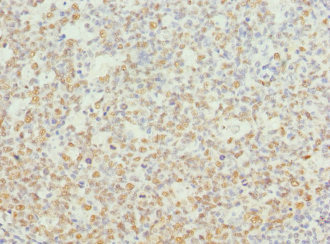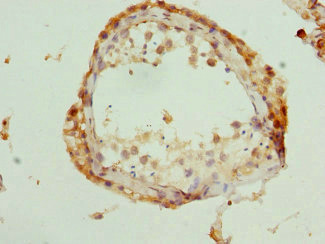Full Product Name
Rabbit anti-Homo sapiens (Human) NASP Polyclonal antibody
Alternative Names
5033430J04Rik antibody; AI131596 antibody; AI317140 antibody; D4Ertd767e antibody; DKFZp547F162 antibody; Epcs32 antibody; FLB7527 antibody; FLJ31599 antibody; FLJ35510 antibody; MGC19722 antibody; MGC20372 antibody; MGC2297 antibody; MGC93869 antibody; NASP antibody; NASP_HUMAN antibody; nuclear autoantigenic sperm protein (histone binding) antibody; Nuclear autoantigenic sperm protein antibody; PRO1999 antibody; RP23 233B9.9 antibody
Immunogen
Recombinant Human Nuclear autoantigenic sperm protein (519-788AA)
Immunogen Species
Homo sapiens (Human)
Purification Method
Antigen Affinity Purified
Concentration
It differs from different batches. Please contact us to confirm it.
Buffer
PBS with 0.02% sodium azide, 50% glycerol, pH7.3.
Tested Applications
ELISA, IHC
Recommended Dilution
| Application |
Recommended Dilution |
| IHC |
1:20-1:200 |
Storage
Upon receipt, store at -20°C or -80°C. Avoid repeated freeze.
Lead Time
Basically, we can dispatch the products out in 1-3 working days after receiving your orders. Delivery time maybe differs from different purchasing way or location, please kindly consult your local distributors for specific delivery time.
Usage
For Research Use Only. Not for use in diagnostic or therapeutic procedures.







